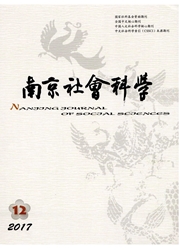

 中文摘要:
中文摘要:
本文通过建立一个将人口统计学特征变量加入的QUAIDS模型,测算城镇居民食品消费的边际预算份额,在此基础上,利用中国省际面板数据实证检验转基因强制性标识政策的实施对城镇居民各类食品消费边际预算份额的影响。理论分析表明,转基因强制性标识政策的实施使我国进入了传统食品和转基因食品互为近似替代品的Stackelberg均衡,转基因食品的进口量更多,价格更低。实证检验表明转基因食品强制性标识政策的实施,一方面促进了城镇居民油脂类、在外用餐类边际预算份额的增加,另一方面,降低了城镇居民肉禽及制品、蛋类、水产品类、酒和饮料类、杂项类边际预算份额。
 英文摘要:
英文摘要:
This paper extends Quadratic Almost Ideal Demand Syetem to measure food marginal budget share of urban residents. Then panel model is applied to analyze the effect of Genetically Modified Policy Implementation on food consumption structure of urban resident. We found that un- der Staekelberg equilibrium, traditional product and a genetically modified product are close substi- tutes, and a Stackelberg type oligopoly produces more. Subsequent empirical study shows that one hand the impact of Genetically Modified Policy implementation on marginal budget share of Oil and Fats, Dining Out is positive. On the other hand, the impact of GM Policy implementation on margin- al budget share of Meat and Processed Products, Eggs, Aquatic Products, Liquor and Beverages, Others is negative.
 同期刊论文项目
同期刊论文项目
 同项目期刊论文
同项目期刊论文
 期刊信息
期刊信息
